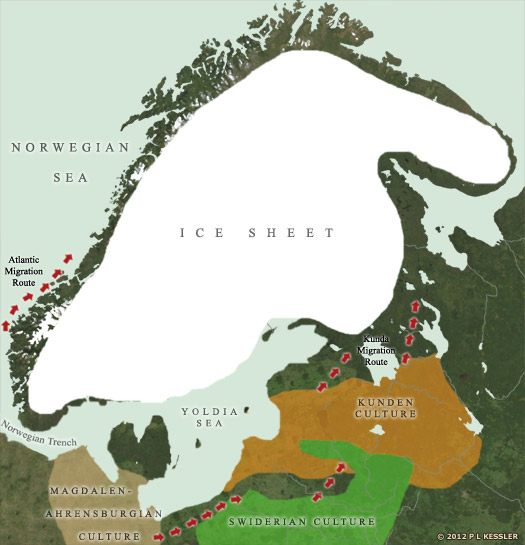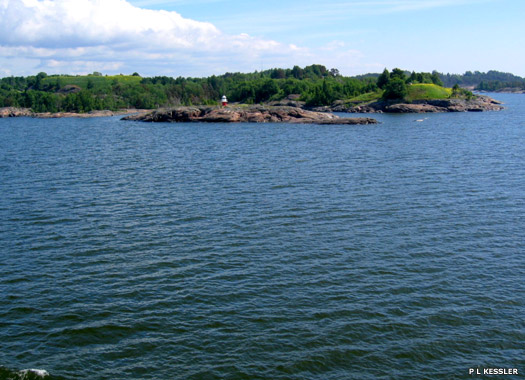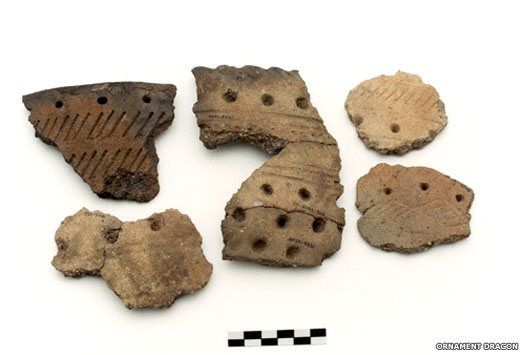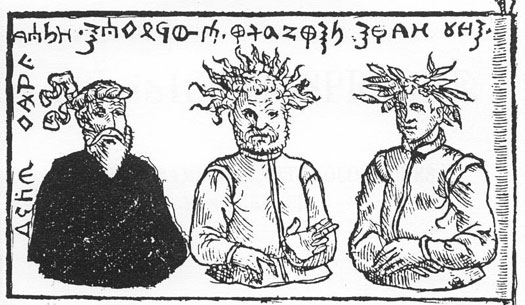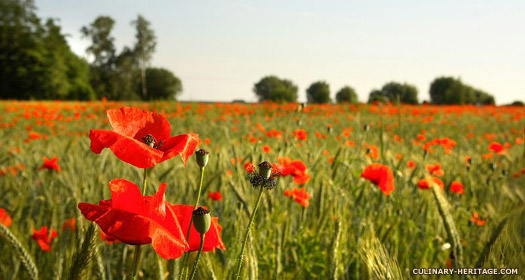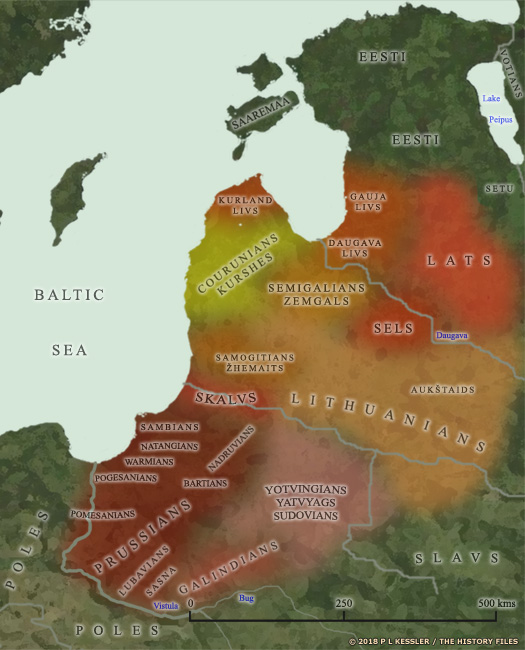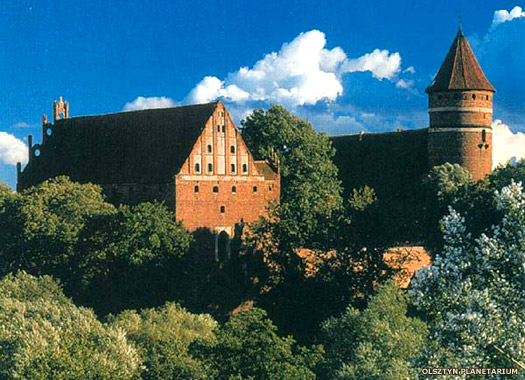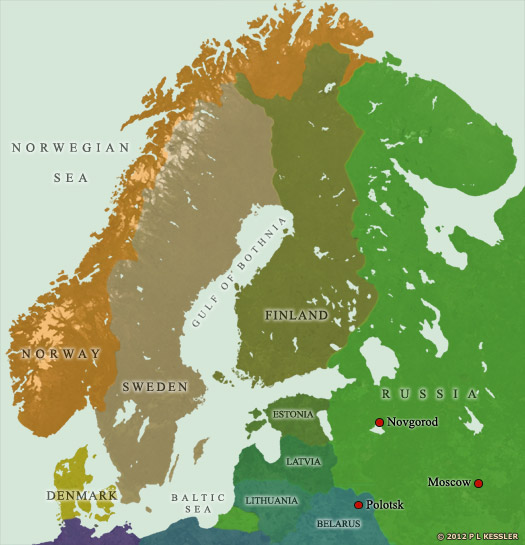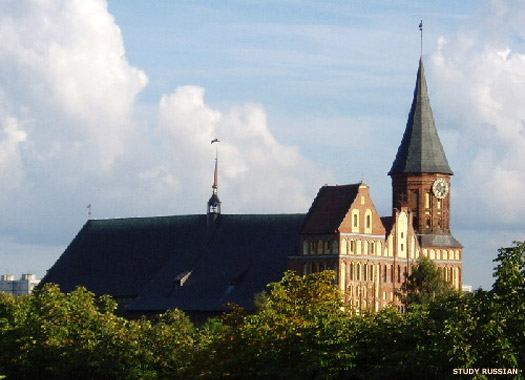
| PRUSSIANS Prussians
(Balts) :
The Prussians were Western Balts who were closely related to the Eastern Baltic tribes of Lithuania and many of those in Latvia. Baltic people have lived around the shores of Mare Suebicum, the Baltic Sea, and as far east as Moscow for several thousand years, arriving as Indo-European proto-Baltic peoples around 3000-2500 BC. They initially formed part of a general westwards migration of Indo-Europeans until splitting off around that time. They further divided from the closely-related Slavic group around 2500 BC and went on to form the ancestors of the Latvians, Lithuanians and Old Prussians. The Old Prussians formed the bulk of the Western Balts, although there were a few other Western Balts who fell outside this classification.
The Prussian name which was used as an umbrella term to describe most of the Western Balts first emerged in the ninth century AD. The form of 'Bruzi' was recorded by a Bavarian geographer some time after 845. Before the ninth century 'Prussian' is believed to have been the name of one of a specific western Prussian tribe and was only gradually transferred to other tribes, just like the tribal name 'Allemagne' was used by Franks to describe all of Germany. Around 965 an Arab trader from Spain, Ibrāhīm-ibn-Jakūb, who visited the Baltic Sea, spoke of Prussians (Brűs or Burűs) as having a separate language and being very courageous in wars against the Vikings ('Rus'). Old Prussian river and place names, although strongly Germanicised and then Slavicised, cover the whole area between the Vistula and Nemunas rivers. Some names which are presumed to be Baltic are found even to the west of the Vistula, in eastern Pomerania. From the archaeological viewpoint there is absolutely no doubt that, before the appearance of the Goths in the lower Vistula area and in eastern Pomerania around the first century BC, these lands belonged to the direct ancestors of the Prussians.
The Old Prussians were also neighboured by the Venedi in the last few centuries BC and perhaps AD. By the tenth century AD various tribes could be distinguished in Old Prussia, including (from east to west) the Sudovians, the Skalvs (otherwise known as Skalvians, Scalovians, Skalwen, Schalmen, or Skalowite), the Nadruvians (Nadruvs or Nadruwite), the Sambians (or Sambite, of what became Samland, but the same as Zembs, below), and the Natangians (Nattangi), all now within Kaliningrad. Then there are the Warmians (Varmians or Varmienses, of what became Warmia), the Bartians (or Barthi), and all but the northern area of each of these is now in Poland), the Galindians (not strictly Old Prussians at first, but certainly Western Balts, and later the surviving groups were classed as Old Prussians), the Pogesanians (Pogesani) and Pomesanians (Pomesani - both of what later became Pomesania), the Lubavians, and the Sasna, (all now completely within Poland). The Yotvingians (Yatvyags) and Zembs (not the same as the Zhemaits) were further to the south and east. The Yotvingians were identical with the Sudovians. Despite their seemingly dislocated location, the Zembs were identical with the Sambia, the latter being an international spelling of the original Baltic name.
The Skalvs and Yotvingians were almost completely annihilated by the Teutonic Knights in the thirteenth and fourteenth centuries, and uninhabited areas appeared on the borderlands between the Order and Lithuania. Parts of Zhemait territory such as Zhasino later became part of Lithuania. Kulmerland was a south-western tip of Prussian territory which was encircled by the River Vistula to the west and the Drewenz to the east. This later became the bishopric of Culm. The Bartians are remembered in the name of the modern city of Bartoszyce.
To all intents and purposes the Prussians were destroyed as a recognisable people by the Teutonic Knights, although some survived by crossing the eastern border and merging with the Lithuanians. By the seventeenth century, East Prussia was an entirely Germanic state, while West Prussia remained a Polish possession until 1772. Unsurprisingly, the Prussian languages also did not survive. Old Prussian finally disappeared around 1700 due to the German colonisation of East Prussia.
(Information by Peter Kessler, with additional information by Leitgiris Living History Club, from The History of the Baltic Countries, Zigmantas Kiaupa, Ain Mäesalu, Ago Pajur, & Gvido Straube (Eds, Estonia 2008), from Królestwo rowerowe Warmia i okolice (Cycling Kingdom, Warmia and Surroundings), Green Velo tourist publication, 2015, from The Horse, the Wheel, and Language: How Bronze-Age Riders from the Eurasian Steppes Shaped the Modern World, David W Anthony, from Eric's Chronicle, from the 15th Yearbook of the Estonian Learned Society in Sweden, 2010-2014 (Eesti Teadusliku Seltsi Rootsis aastaraamat XV. 2010-2014), Ants Anderson (Ed, Stockholm, 2015), and from External Links: The Balts, Marija Gimbutas (1963, previously available online thanks to Gabriella at Vaidilute, but still available as a PDF - click or tap on link to download or access it), and Leitgiris.)
9000s BC :
By this date, Estonia, Finland, Latvia, Lithuania, and Prussia are settled by pre-Baltic hunter-gather tribes which all share the same cultural traces. They belong to two groups, one being the regionally-dominant Baltic Kunda culture, which is a development of the earlier Swiderian culture which itself is located on the eastern edges of the later Prussian territory. The other is the Magdalen-Ahrensburg culture located in north-western Germany and Denmark, which probably enriches the Kunda culture.
Traditional scholarly belief has these hunter-gatherers migrating from the southern Baltics and further east, but a more recent idea suggests that while this is correct for the Baltics, Finland and northern Scandinavia are also first inhabited via the sweeping grass plains of Doggerland (now under the North Sea).
Finland is probably the only known location in Scandinavia with an inter-Glacial Neanderthal settlement which dates to around 120,000 years ago, while the first anatomically modern humans arrived around 9000 BC at the end of the last ice age, as shown in the map above c.8200 BC :
The waters of the ice-damned Baltic Ice Lake penetrate the region of the Billingen Mountains to form a link with the Atlantic Ocean. As a result, the Yoldia Sea drops rapidly, by about thirty metres. This retreat is so sudden, and probably has such a profound effect on the early inhabitants of the Baltic area, that it is known as the Billingen Catastrophe. 8000 - 7100 BC :
The Preboreal period sees the climate become significantly warmer in the Baltics. Birch and pine forests start to spread, and elk, bears, beavers, and various species of water birds migrate into the region from the south.
7100 - 5800 BC :
The Boreal period sees the climate continue to warm and become drier. Pine forests decrease, allowing deciduous trees to gain a firmer foothold and become prevalent. The animal population thrives, with red deer, roe deer, and hares increasing considerably.
5800 - 2800 BC :
The Atlantic period is characterised by a climate that is warmer than that of the present day. New species migrate into the Baltic region, including Baltic aurochs and wild boar, which inhabit forests of broad-leaved trees. Water chestnuts grow in the many lakes, and the bountiful life draws hunter-gatherers into the area. The warmness fails towards the end of this period, causing the disappearance of aurochs, wild horses, and water chestnuts.
c.3000 BC :
The Comb Ceramic culture reaches Prussia, Latvia, Estonia and Finland as new peoples arrive from the east, almost certainly the Finno-Ugric tribes who form the later core of Finland and Estonia (Estonians, Finns, Livs, Karelians, Wots, Weps, and Ingrians). This Neolithic culture seems to form on the basis of the previous Mesolithic cultures, but uses a greater variety of bone, antler and stone implements, and employs boring, drilling, and abrading skills. The Mesolithic Nemunas culture of southern Lithuania is replaced by the Neolithic Nemunas culture.
The pottery of the Comb Ceramic culture (also known as Pit-Comb Ware) - a widespread cultural expression of far north-eastern Europe's foragers between the Baltic Sea and the Ural Mountains - shows the typical comb imprints that gave the its name c.2500 BC :
The Corded Ware culture (or Boat Axe culture) arrives in southern Finland, along the coastal regions, as well as in Estonia, Latvia, Lithuania, Belarus, western Russia, Poland, northern Germany, Denmark, and southern Sweden. These new, probably early Indo-European, arrivals also have some domesticated animals and bring agriculture with them, although they continue to exist alongside universally-practised hunter-gather activities for some time. Both of these groups - foragers and farmers - form the proto-Baltic ancestors of the later Latvians and Lithuanians. 1600 BC :
By now the people of the central European Unetice culture have established commercial relations with the Mycenaeans. A transcontinental amber trade has already begun at about the same time as the Baltic Bronze Age, and amber has already been in some demand by the Uneticians themselves. Now, though, the amber trade reaches an amazing volume. The Uneticians import their amber from the Balts and from the Germanic peoples in Jutland, and it is estimated that at least eighty per cent of the graves of classical Unetice contain amber beads. c.1300 BC :
In the Bronze Age, prior to expansion of the central European Lusatian culture around this time, the Western Balts seem to cover the whole of Pomerania to the lower Oder, and what is now eastern Poland to the Bug and upper Pripet basins in the south. Archaeology later shows that the same culture can be found here as the one that is widespread in ancient Prussian lands. The southern extent of the Prussians along the River Bug, a tributary of the Vistula, is indicated by the Prussian river names. c.AD 50 - 150 :
The arrival on the southern Baltic coastline of the Gothic people in the first and second centuries AD has a great impact on the Baltic population there. The strongest tribe of the western Baltic bloc which had previously manifested itself in face and pot-covered urn graves of the Face-Urn culture eventually disintegrates due to this and the preceding Celtic expansion. The other Baltic tribes have been less touched by outside influences and conservatively preserved their local character.
The ancestors of the Galindians, Lets, Lithuanians, Natangians, Sambians, and Semigallians continue throughout the entire Early Iron Age to build stone cists in which they place urns of a family or kin, covering them with an earth barrow secured by a stone pavement from above and stone rings around. While available, Middle and Late La Tčne fibulae are also imported and imitated. In marked contrast to Celtic and Germanic graves, however, weapons are extremely rare in Baltic graves. The inland Prussian tribes seem to live a rather peaceful life.
Other Baltic tribes are now developing their own distinctive burial rites. Sudovians build stone barrows, Couronians place their dead in stone circles or rectangular walls, while their neighbours in central Lithuania use flat graves supporting tree-trunk coffins with stones. The differentiation of local burial rites from around this time permits modern scholars the chance of perceiving tribal borders between the various Baltic tribes, which thereafter remain unchanged in this region until the coming of the Germans. Until then, there is no evidence of migrations, shifts of population, or invasions of the Baltic lands by foreign peoples.
c.150 :
Ptolemy, who writes in the mid-second century, records the existence of the Galindai and Soudinoi tribes, the later Galindians and Sudovians. Both of these are Western Balts, but not Old Prussians, although they do closely border the Old Prussians to the south. The fact that these names already exist show that Prussian tribes (and probably the other Baltic tribes) have their own names and that they survive virtually unchanged for the next millennium.
The gods of the Old Prussians were Patrimps, Parkuns and Patolls (sounding like modern Latvian names in the compulsory 's' at the end of each name) who were related to the principle cycles of human life - birth and growth, maturity, and ageing and death 7th century :
In this century Swedish forces establish strongholds at Truso and Viskiautias (Wiskiauten or Viskiautai), in the territory of the Prussians. The latter stronghold is located at the south-western corner of the Courish Lagoon in northern Samland, and is the gateway for the traffic leading to the east via the lower Nemunas basin into the lands of the Couronians, Lithuanians, and other Baltic tribes. According to some sagas, Scandinavian kings are likely to rule over all the countries on the eastern shores of the Baltic, although in reality this probably means various strongholds and trading centres along the coastline.
The numerous Baltic tribes are currently ruled by powerful chieftains and landlords, a system which remains in place until the beginning of recorded history in the region. Among the Baltic tribes the Prussians and Couronians continue to play leading roles. In the previous century or so, the Lets have expanded their territory to cover much of northern Latvia, replacing the previously dominant Finno-Ugric tribes there, the early Estonians. c.880 - 890 :
The traveller and trader, Wulfstan of the Viking trading site of Hedeby in Danish Jutland, while visiting the Prussian lands around this time, witnesses many 'towns', each with its king. There are clear indications that the feudal castles, as defence posts for the growing towns, have already come into existence in the period between AD 500-800, and have subsequently become the centres for larger administrative units. The formation of the feudal system has already been accomplished by the time of Wulfstan's visit. 997 :
St Adalbert of Prague, sent by the Pope into Prussian lands to convert the pagans, is escorted by soldiers granted to him by Boleslaw I the Brave, duke of Poland. The twelfth century bronze door of the cathedral in Gniezno in northern Poland depicts scenes of Adalbert's Prussians, showing them with spears, swords, and shields. They are beardless but with moustaches, have trimmed hair, and are wearing kilts, blouses, and bracelets. Adalbert refuses to heed warnings to stay away from the sacred oak trees (it is customary for sacred oaks to be cut down by missionaries to show that Christianity is stronger than any spirits they are supposed to contain). Instead, Adalbert is executed for sacrilege. Boleslaw begins a series of unsuccessful attempts at conquering the Prussians.
fl 999 :
Widewuto / Waidewut : Semi-legendary chieftain of the Prussians.
fl 999 :
Bruteno the Priest
1009 :
The annals of the town of Quedlinburg in Germany report the arrival of Saint Brunon, known more normally as Bonifatius, on missionary work among the Prussians. His attempt ends in failure, and it is believed he is killed together with his eighteen companions somewhere in the vicinity of the Lithuanian border (the first mention of 'Lithuania' in written sources).
The border lands of Mazovia, which today form over a tenth of Poland, were hotly contested between the Poles and the Prussians in the thirteenth century 1147 :
Boleslaw IV of Poland attacks the Prussians with the aid of Russian troops, but is unable to conquer them.
1187 :
The 'pagans of the Eastern Sea' (Estonians of Saaremaa, Couronians, and Sambians (Zembs) of Old Prussia) conquer Sigtuna, the most important town of the Swedes, which they then burn down. The Swedish Eric's Chronicle of 1335 blames the Finnish Karelians for the attack. More recently, Professor Kustaa Vilkuna has suggested that the raid is in revenge for Sigtuna's merchants having intruded upon Kven fisheries on the River Kemijoki and the hunting grounds of the Karelians. The medieval naming of a settlement in the village of Liedakkala by the River Kemijoki as 'Sihtuuna' may be additional confirmation of this.
1209 - 1222 :
Under the Polish Prince Konrad of Mazovia, attempts to conquer the Prussians are intensified, with large battles and crusades taking place in 1209, 1219, 1220, and 1222. 1226 :
The Golden Bull of Rimini is issued by Frederick II, giving the Teutonic Knights wide-ranging powers in the name of the Holy Roman empire in Prussia.
By about AD 1000 the final locations of the Baltic tribes were well known by the Germans who were beginning their attempts to subdue and control them, although the work would take a few centuries to complete and the Lithuanians would never be conquered by them 1228 - 1241 :
Prince Konrad of Mazovia in Poland invites the Teutonic Knights to settle in the Lower Vistula on the border with the Prussians, who have been ravaging Mazovia, part of which occasionally includes their region of Chełmno. Over the following decade, the Prussian lands are swallowed piecemeal, as the Order uses its successful tactic of building a stronghold, pacifying the immediate territory, and then advancing to repeat the process. The dispersed and tiny lands of the Prussian tribes are an easy conquest.
By 1237-1238, Pamedė (of the Pomesanians) and Pagudė (of the Pogesanians) are already under the Order's rule. Next, the Teutons push on along the Frisches Haff and in 1240 defeat the united Bard (Bartians), Natangians, and Warmians. In 1241 the conquered and newly-baptised Prussians, no longer able to stand the oppression of the conquerors, rise up in revolt, but they are defeated by 1249. Following this interruption, the Order continues its advance to the north, intent on forming its own military-religious state (known as the Ordenstaat) which it governs for the next three hundred years. 1243 :
The Papal legate, William of Modena, oversees the creation of the four dioceses of Culm, Ermland, Pomesania, and Samland within the recently conquered Prussian territories. Bishops
of Ermland :
Emland became a diocese within the Prussia of the Teutonic Knights (known as the Order). The Papal legate, William of Modena, oversaw the creation of the diocese in 1243, along with those of Culm, Pomesania, and Samland. It was a semi-independent ecclesiastical state which fell under the jurisdiction of the archbishop of Riga.
During this period, while the native peoples of Livonia and Lithuania were consolidating into recognisable modern peoples, the inhabitants of Prussia were in a dismal state. Treaties signed between the Prussians and the Order had not been fulfilled; the Prussians were forbidden to live in towns, and they were driven out of their native areas and moved to the eastern districts of the state. Large numbers of Prussians died and their farms were destroyed during the crusade, with almost all the western and northern Prussian provinces now being under the control of the Order, and also in the revolts of 1260-1274. The Order ordered the colonisation of Prussia by German peasants with the result that the few Prussians who survived found themselves surrounded by Germans and were gradually assimilated. It was only in Samland with one of the heaviest concentrations of Balts that they constituted a majority.
The colonisation and Germanisation of the Prussian lands began immediately. By 1400, the Teutonic Order could boast fifty-four towns, nearly a thousand villages, and almost twenty thousand farms of new colonists. During the wars the Prussian upper class and its leaders had perished. The survivors yielded to the control of the Order, were baptised, and in striving for social status gradually accepted German customs and language. The lower and lower-middle classes were underprivileged and peasants were forced into serfdom. The language and customs of the Prussians were preserved by this lower, underprivileged class, and Prussian continued to be spoken for another four hundred years. The western provinces were more rapidly Germanised than was the Samland peninsula where the old population lived in compact groups. Catechisms published in Prussian in the sixteenth century show that not everyone understood German. It is known that at the beginning of the seventeenth century sermons were preached with the help of translators, but the Prussian language was living through its last stages at the end of this century. It was only spoken by the old people in villages.
(Additional information by Leitgiris Living History Club, from The History of the Baltic Countries, Zigmantas Kiaupa, Ain Mäesalu, Ago Pajur, & Gvido Straube (Eds, Estonia 2008), from Królestwo rowerowe Warmia i okolice (Cycling Kingdom, Warmia and Surroundings), Green Velo tourist publication, 2015, and from External Links: The Balts, Marija Gimbutas (1963, previously available online thanks to Gabriella at Vaidilute, but still available as a PDF - click or tap on link to download or access it), and Leitgiris.)
1249 - 1250 :
Heinrich von Strateich
1250 :
Heinrich von Strateich is elected to be the first bishop of Ermland, but he does not take up the office. Instead, his replacement, Anselm, becomes the first bishop of Ermland to enter the region and perform the duties of his office.
1250 - 1274 :
Anselm of Meissen
1252 :
The Teutonic Knights take northern Prussia, with the result that the bishopric of Samland is formed there, comprising the Frisches Haff (Vislinskii Zaliv) and Kurisches Haff (Kurskii Zaliv), with Königsberg serving as the administrative headquarters. The inhabitants of Prussia are in a dismal state by this time. Treaties signed between the Prussians and the Teutonic Knights are not fulfilled; the Prussians are forbidden to live in towns, and they are being driven out of their native areas and moved to the eastern districts of the region.
1260 - 1274 :
The Livonian Knights, along with the Teutonic Knights, are abandoned by their Estonian and Couronian vassals and defeated again, this time severely, at the Battle of Durbe in Livonia by the Samogitians. As a result, numerous rebellions break out against the Teutonic Knights all across the Baltics, including a general uprising throughout Prussia. The Prussians win several battles against the hard-pressed Knights and by 1264 the situation is critical. Reinforcements arrive from Germany and the Order launches an attack against the rebels who are led by Henrich Mantas, with final defeat of the Prussians coming in 1274. Several uprisings occur in the thirteenth century, but none as serious as this.
fl 1270s :
Henrich Mantas : Prussian rebel leader.
1278 - 1300 :
Henryk / Heinrich Fleming
1283 :
The Teutonic Knights continue to advance north, and having conquered the lands of the Skalvs and part of that of the Yotvingians, they drive the Nadruvians to the River Nemunas in 1283, right on the border with Lithuania. The population of these areas is slaughtered, with only a few managing to escape across the border. Nadruvian lands become deserted. Being divided into many small principalities and unable to organise a united army of all the Prussian people, they have been unable to hold back the increasing numbers of their enemy. Teutonic castles, superior to Prussian ones, cover the whole territory of the Prussian tribes by the end of the thirteenth century.
1290 :
The last of the Old Prussians to fall as a result of continuous wars with the Poles of the eastern province of Masuria and Germans in the last quarter of the thirteenth century is Sūduva, the land of the Sudovians (Yotvingians). After the loss of nearly two-thirds of the Prussian territory in the south due to Rus and Polish expansion before the thirteenth century, and after a tremendous loss of life in the wars with the Germans, only some 170,000 Old Prussians are left. On the Samland peninsula, the previously most thickly populated area, their number is reduced to a mere 22,000.
In 1290 the bishop of Courland re-enters his territory following the successful suppression of the Baltic rebellions. However, in the same year the cathedral chapter is incorporated into the territory belonging to the Teutonic Knights, resulting in the bishopric being subject to the Order, and many of its incumbents being members of the Order. The same process has already been forced upon the dioceses of Prussia, with the exception of Ermland which maintains its independence.
1301 - 1326 :
Eberhard von Neiße : Neiße is Nysa in Poland.
fl 1320s :
Krivė : 'Pope' to the Balts of Couronia, Lithuania, Prussia, & Semigallia.
1326 :
Peter von Dusburg writes that in the Prussian province of Nadruva, in the place called Romuva, there is a powerful priest named Krivė, whom the people regarded as pope, and whose dominion extends not only over Nadruva, but also over Couronia, Lithuania, and Semigallia. The only such 'pope' known to recorded history, Krivė is highly respected by the kings, nobility and common people, and his rule covers almost all of the Baltic lands during the wars a gainst the Teutonic Knights.
1327 - 1328 :
Jordan : Bishop of Warmia.
1329 - 1334 :
Heinrich Wogenap
1334 - 1337 :
The position is vacant for over two years. Coincidentally, perhaps, at the end of this period, in 1337, Duke Otto IV of Carinthia founds the Societas Templois Order of knights to play a part in the suppression of the Prussians and the conquest of the Lithuanians.
Allenstein (now Olsztyn) was located in the south of Warmia, and construction on its castle began in 1346, with the later city growing up around it 1337 - 1349 :
Hermann von Prag : Herman of Prague.
1341 - 1351 :
The seat of the bishop of Emland is moved temporarily to the medieval town of Orneta. The town had only been incorporated in 1313 and it includes the Gothic parish church of St John the Baptist near the main square. This is built in the same century and is later expanded in the fifteenth century. It has a basilica construction that is seldom seen in Warmia, which means that its main nave is twice the height of the side naves. Attached to the main nave is a ring of chapels, and the church's interior is richly decorated, mostly in the Baroque style, but the south nave also contains medieval paintings.
1350 - 1355 :
Johannes of Meissen
Prince-Bishops
of Warmia :
In 1356, the bishops of Ermland became imperial prince-bishops under Holy Roman Emperor Charles IV. The prince-bishopric was, in practice, semi-independent, although it covered only about a third of the entire diocese. The rest of the diocese was under the control of the Teutonic Knights until 1525 and then the dukes of East Prussia.
By now, Ermland in its German form was being written as Warmia, a more Polish Latinised form of the name.
(Additional information from Królestwo rowerowe Warmia i okolice (Cycling Kingdom, Warmia and Surroundings), Green Velo tourist publication, 2015.)
1355 - 1373 :
Johannes Stryprock
1373 - 1401 :
Heinrich Sorbom
1401 - 1415 :
Heinrich Heilsberg von Vogelsang
1415 - 1424 :
Johannes Abezier
1424 - 1457 :
Franciscus Kuhschmalz
1457 - 1458 :
Enea Silvio Piccolomini : Later Pope Pius II (1458-1464).
1458 - 1467 :
Paul von Legendorf
1466 :
At the conclusion of the Thirteen Year War, along with the Teutonic Knights, the bishopric of Warmia falls under the suzerainty of Poland and German prince-bishops are replaced by mostly Polish archbishops, although the congregation in the northern part of the diocese is still German.
1467 - 1489 :
Nicolaus von Tüngen / Mikołaj Tungen
1489 - 1512 :
Lucas Watzenrode
1512 :
Warmia becomes an exempt bishopric, removing it from regional control and placing it under the direct jurisdiction of the Pope.
1512 - 1523 :
Fabian of Lossainen
1523 - 1537 :
Mauritius Ferber
1525 :
The Teutonic Knights' Ordenstaat is secularised and converted to Lutheran Protestantism as the duchy of East Prussia, although Warmia remains a catholic archdiocese. In the same year, the reverberations of the Peasants' War in Germany reach Prussia.
1537 - 1548 :
Johannes Dantiscus / Jan Dantyszek : 'Father of Polish Diplomacy'.
1549 - 1550 :
Tiedemann Giese
1551 - 1579 :
Stanislaus Hosius
1579 - 1589 :
Martin Kromer
1589 - 1599 :
Andrew Báthory
1600 - 1604 :
Piotr Tylicki
1604 - 1621 :
Szymon Rudnicki
1618 :
The duke of East Prussia, Albert Frederick, dies without an heir and the territory is inherited by the senior Hohenzollern line in Brandenburg. Much of Prussia is united to the German electorate.
1621 - 1633 :
John Albert Vasa
1633 :
The line of bishops of Warmia continues during the Swedish period in Prussia.
Swedish
Prussia :
Hostilities between Poland and Sweden flared up in 1617, but this time the reorganised Swedish forces were unstoppable, taking Riga and pushing into Lithuanian and Polish territories. The Treaty of Altmark in 1629 concluded the First Polish-Swedish War by recognising the Swedish capture of most of Poland's southern Estonian and Livonian territories, with Poland retaining just Latgallia in the east of Livonia. Poland was also forced to temporarily cede the port cities of Braunsberg (Braniewo in Ermland), Elbing (Elblag), Memel (Klaipeda), and Pillau (Baltiysk). The territory was termed Swedish Prussia, and Swedish governors-general were appointed to manage it (shown in red). They became part of the front line during the Thirty Years' War, which began in 1630, often commanding large swathes of Sweden's forces outside Scandinavia. The bishops of Warmia continued to hold their own post, and the list of them continues here from 1635 onwards.
(Additional information from Królestwo rowerowe Warmia i okolice (Cycling Kingdom, Warmia and Surroundings), Green Velo tourist publication, 2015.)
1626 - 1629 :
Aleksander von Essen : Swedish commander in Pillau.
1629 - 1630 :
Johan Banér : First governor-general, in Ebling.
1630 - 1631 :
Axel Gustafson Oxenstierna : Lord High Chancellor of Sweden. Regent (1632-1644).
1630 - 1632 :
Sweden enters the Thirty Years' War in summer 1630. As part of the military funding, tolls and food supplies secured in Swedish Prussia are pivotal assets. The first major victory of the Protestant forces in the war is at the Battle of Breitenfeld in September 1631, which ensures that the northern German Protestant states will not be forced to reconvert to Catholicism. The forces of Sweden and Saxony force the Catholic League's line to collapse, and serious casualty numbers are inflicted on the armies of the Holy Roman empire, Hungary and Croatia. Tragically for Sweden, the king is killed at the Battle of Lützen on 6 November 1632. Axel Gustafson Oxenstierna, governor-general of Swedish Prussia, becomes supreme commander of the Swedish troops in Germany and then regent for the king's daughter, Christina.
1631 - 1632 :
Bengt Bagge : Acting governor-general.
1632 :
Karl Banér : Jan-Apr only.
1632 :
Bengt Bagge : Acting governor-general for the second time, Apr-Aug only.
1632 - 1635 :
Hermann greve Wrangel : Later governor of Livonia (1643).
1635 :
Johan Nicodem : Acting governor-general.
1635 :
Poland regains Swedish Prussia, first with Memel in July and then the remainder in September. The line of bishops of Warmia has continued in the meantime without interruption.
1633 - 1643 :
Mikołaj Szyszkowski : Successor to Prince-Bishop John Albert Vasa.
1641 :
The village of Stoczek Klasztorny (also known as Stoczek Warmiński) had been established in the mid-fourteenth century. Bishop Mikołaj Szyszkowski now builds a rotunda there as a votive offering for the Polish victory in the war against Sweden. Around this is built a Sanctuary of the Holy Mary.
1643 - 1644 :
Jan Karol Konopacki
1644 - 1659 :
Wacław Leszczyński
1659 - 1679 :
Jan Stefan Wydżga
1680 - 1688 :
Michał Stefan Radziejowski
1688 - 1697 :
Jan Stanisław Zbąski
1698 - 1711 :
Andrzej Chryzostom Załuski
1701 :
The electorate of Brandenburg-Prussia is elevated to a kingdom by the Holy Roman Emperor, the first German state to be raised in this manner.
1711 :
Stefan Wierzbowski : Auxiliary bishop.
1711 - 1723 :
Teodor Andrzej Potocki
1723 - 1724 :
Jan Franciszek Kurdwanowski : Auxiliary bishop.
1724 - 1740 :
Krzysztof Andrzej Jan Szembek
1740 - 1741 :
Michal Remigiusz Laszewski : Auxiliary bishop.
1741 - 1766 :
Adam Stanisław Grabowski
1767 - 1795 :
Ignacy Krasicki
1772 :
The First Partition of Poland-Lithuania takes place on 5 August, removing large swathes of the commonwealth from Polish control. Warmia and parts of Great Poland are taken by Prussia (as West Prussia).
1795 - 1803 :
Karl von Hohenzollern-Hechingen
1803 - 1808 :
The position is vacant for five years in a period which sees the kingdom of Prussia conquered by Napoleonic France (1806).
1808 - 1836 :
Joseph von Hohenzollern-Hechingen
1836 - 1841 :
Andreas Stanislaus von Hatten
1841 - 1867 :
Joseph Ambrosius Geritz
1867 - 1885 :
Philipp Krementz
1886 - 1908 :
Andreas Thiel
1908 - 1930 :
Augustinus Bludau
1930 - 1945 :
Maximilian Kaller : Died 1947 as exiled bishop.
1945 - 1972 :
The bishop's seat is left vacant following the conclusion of the Second World War and the expulsion of the German population by the Soviet Russian victors. This expulsion includes the German bishop, with the result that the position remains vacant in Poland until a new Polish diocese is formed in 1972.
1972 - 1978 :
Józef Drzazga
1979 - 1981 :
Józef Glemp
1981 - 1988 :
Jan Władysław Obłąk
1988 - 2006 :
Edmund Michał Piszcz : Archbishop from 1995.
1995 :
The diocese is elevated to an archdiocese.
2006 - Present :
Wojciech
Ziemba : Duchy
of East Prussia
The Teutonic Knights' Ordenstaat was secularised and converted to Lutheran Protestantism in 1525, with the new name of the state, Prussia, being selected after the name of the indigenous people. Unfortunately, that indigenous people, the Prussians, were fast becoming extinct in cultural and linguistic terms. By the end of the seventeenth century, Prussian as a spoken language had disappeared completely and the Prussians as an ethnic group had also disappeared.
Albrecht von Hohenzollern, margrave of Brandenburg-Kulmbach, was closely related by birth to the Hohenzollern electors of Brandenburg, and for a while the two territories were separately run by these two main branches of the family. East Prussia remained under the control of first Albrecht and then Albert Frederick of Hohenzollern, but unification of the two states followed in 1618. The Teutonic Knights, ousted entirely from power, remained as mere titular administrators, supported by the Holy Roman Emperor who continued to hold a claim on Prussia.
(Additional information from External Link: The Balts, Marija Gimbutas (1963, previously available online thanks to Gabriella at Vaidilute, but still available as a PDF - click or tap on link to download or access it).)
1525 - 1568 :
Albrecht of Hohenzollern : Former grand master of the Teutonic Knights.
1568 - 1618
Albert Frederick of Hohenzollern
1577 :
The bishopric of Samland is dissolved and the territory is submerged within East Prussia.
1587 :
The bishopric of Pomesania is dissolved and the secularised territory is submerged within East Prussia.
1618 - 1945 :
Albert Frederick dies without an heir and the territory is inherited by the senior Hohenzollern line in Brandenburg. The two are united, and East Prussia remains under German control. In 1773 the now totally-Germanised state is reorganised as the province of East Prussia within the kingdom of Prussia. Following the conclusion of the First World War, West Prussia is absorbed by Poland, but East Prussia remains an internationally-recognised German enclave until the end of the Second World War, when it is occupied by the Soviet Russians.
Modern
Kaliningrad (East Prussia) :
Kaliningrad is an enclave of territory on the eastern Baltic coast which is sandwiched between Poland to the south and west, and Lithuania to the north and east. It was annexed from Germany following the conclusion of the Second World War by the victorious Soviet Russians and was turned into a military zone. For seven hundred years before that it had been a German possession, carved out of the lands of the former pagan Prussians and other related tribes by the Teutonic Knights. Now, the region is administered by Russian governors who are appointed by Moscow.
1945 - 1991 :
The victorious Soviet Russians take the northern section of East Prussia, including the region of Samland, and annexe it directly to the state. The southern half, which includes the regions of Culm and Pomesania go to Poland. The German population either flees or is expelled and is replaced by an imported Russian and Belarusian population. The capital is renamed from Königsberg to Kaliningrad, and the entire region remains a closed military zone throughout the Soviet period. Memel (Klaipeda), to the north, is incorporated into Soviet Lithuania.
1991 :
The Soviet empire collapses, and neighbouring Poland and Lithuania become independent states. Kaliningrad remains directly part of Russia, but the reason for its existence as a heavily fortified military base of massive proportions is ended and it becomes an isolated enclave and an almost forgotten backwater in Europe.
The fourteenth century Königsberg Cathedral was almost completely destroyed during the Second World War, but was rebuilt in the early 1990s, while above is a map showing the modern Nordic borders - Kaliningrad is the unlabelled green region below Lithuania 1991 - 1996 :
Yury Matochkin : First post-Soviet governor.
1996 - 2001 :
Leonid Gorbenko : Born in the village of Simskoe in 1931.
2001 - 2005 :
Vladimir Yegorov : Born in Moscow in 1938. Former admiral of Baltic Sea Fleet.
2004 - 2006 :
Lithuania joining the European Union in 2004 means it is impossible to travel overland between the Russian enclave in Europe and the rest of Russia without crossing the territory of at least one EU state. This causes friction, particularly with Lithuania, over transit regulations. As an attempt to take its travel needs out of EU hands, Russia inaugurates a new sea route linking the region with Ust-Luga, near St Petersburg, in 2006.
2005 - Present :
Georgiy Boos : Born in Moscow in 1963.
2007 :
Kaliningrad undergoes a massive economic boom, with a modern airport terminal being opened in this year.
Source :
https://www.historyfiles.co.uk/ |
